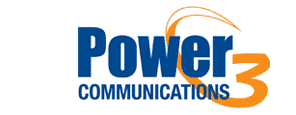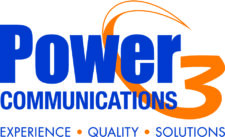
- Trunk– The communications channel, usually a physical line, between a telephone system and the telephone company central office. In brief, a business phone line.
- Station/Extension– Simply another word for telephone. For example, the telephone station may be one of many extensions on a Voice over IP based or traditional PBX system.
- Port– An interface location on a communications system that provides a point of access for peripheral equipment; such as stations, trunks,T1/PRI circuits, voice mail, IP sets, etc. Total port capacity is one way of measuring the growth capability of a telephone system.
- T1/PRI Line– A digital transmission link from the telephone company central office capable of handling up to 1.544 Mega bits per second. A T1/PRI circuit can handle voice, data or both (an “integrated” circuit). If the configuration is for voice only, a full T1 represents 24 telephone lines. A PRI circuit differs from a conventional T1 in that it provides caller ID information, and represents the equivalent of 23 phones lines. The 24th “line” is used exclusively for transmitting the caller ID data to the telephone system.
- DID (Direct inward Dialing)– When a call is received over the DID circuit (the only type of connections currently available for this feature are T1/PRI lines or SIP Trunks, with SIP being the better alternative because of its significant price advantage relative to T1/PRI) it is preceded by a packet of information containing the number that was dialed. The on premises phone system decodes this information and routes the call to the extension that has been programmed to coincide with the number dialed. The benefit to the consumer is a pooled access group for incoming calls so that dedicated lines are not required to provide numerous individual telephones with direct access availability.
- VoIP (Voice over Internet Protocol)– Voice over IP (also referred to as IP Telephony and Internet Telephony), in simplest terms, is utilizing the internet to carry voice communications instead of the traditional, circuit switched technology that has been in place for well over 100 years. This technology is available now and represents the future of telecommunications.
- SIP Trunks– A SIP (Session Initiation Protocol) connection is a service offered by many ITSP’s (Internet Telephony Service Providers) that connects a company’s PBX to the existing public telephone network infrastructure via the Internet (instead of conventional telephone lines or T1 circuits) using the SIP VoIP standard. Deploying SIP trunks can significantly reduce monthly telephone expenses and make accessible enhanced calling features unavailable with traditional telephone service.
- CTI (Computer Telephony Integration)– CTI is a set of technologies for integrating computers and telephone systems. A user with a CTI-enabled computer will be able to dial the telephone, answer the telephone, and hang-up the telephone, all from his/her PC. CTI enables users to dial the phone from address books (such as MS Outlook) stored on their computer. A CTI-enabled computer will also display information from the telephone system, and use caller ID data to open a contact file in an address book (again, such as Outlook) as the call is coming in.
- Unified Messaging– Unified messaging (sometimes referred to as email integration) is the handling of voice, email and fax messages as objects in a single mailbox that a user can access either with a regular email client (such as, but not limited to, MS Outlook) or by telephone. The PC user can open and play back voice mail messages, assuming their PC has multimedia capabilities, right from their Outlook In-Box.


